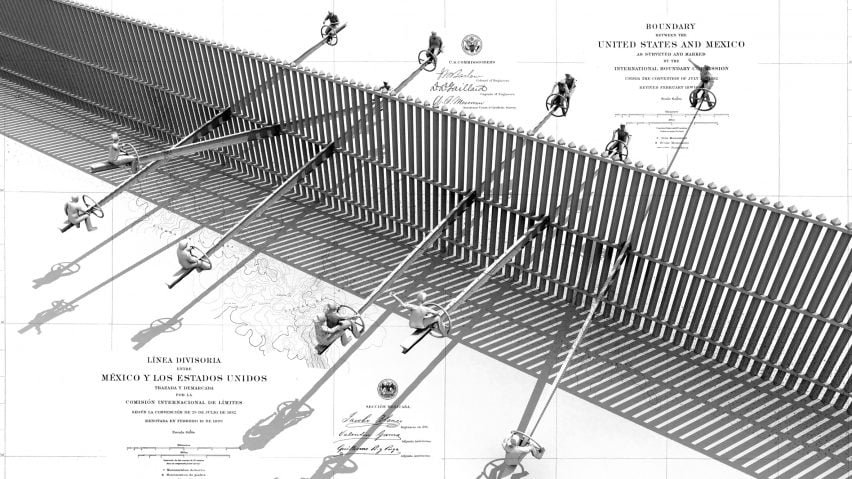
"Play can be an act of resistance" says US border seesaw architect Virginia San Fratello
The pink seesaws installed across the US-Mexico border last summer by architect Rael San Fratello were smuggled into place, partner Virginia San Fratello has revealed.
"It was a guerrilla project," said San Fratello in a live interview conducted as part of Virtual Design Festival. "We asked permission a couple of times in different places and we could never get permission."
The project, which became a viral sensation when it was installed at the border fence on 27 July 2019, was part of an ongoing exploration of border architecture by the California studio.
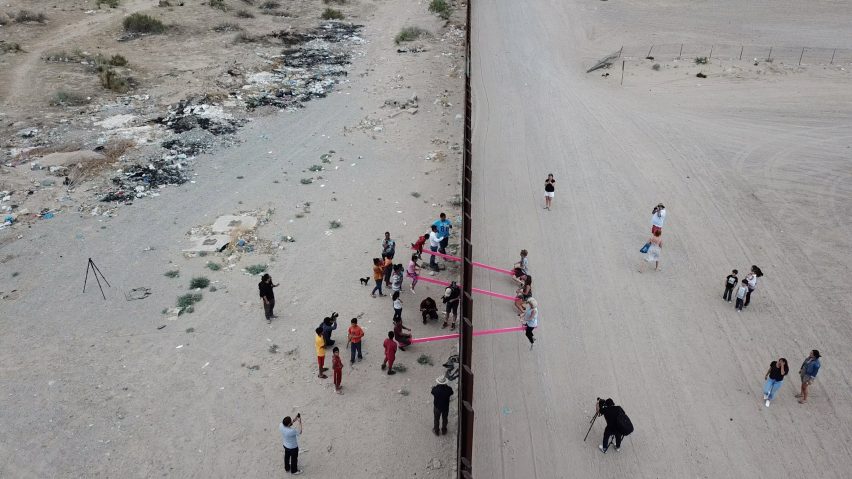
"We've been working at the border between the United States and Mexico for probably 10 years," added San Fratello, whose partner Ronald Rael wrote the 2017 book Borderwall as Architecture.
"We've worked hard to smuggle in design at the border."
The seesaws briefly allowed communities on both sides of the border to play together. The aim, said San Fratello, was "to show the world that play can be an act of resistance."
The seesaws, or teeter-totters, were installed across the controversial barrier wall where it divides Anapra in Mexico from Sunland Park in the US state of New Mexico, splitting a once unified urban area in two.
"No one was willing to support us"
The duo had been working on the idea for several years but had been unable to gain official backing.
"No one was willing to support us – not the border patrol or any local municipalities," she explained. "We ended up just saying: 'Well, we're going to do it because we think it's important'."
It is illegal to attach anything permanently to the border wall, so the three seesaws had to be designed for swift and clandestine assembly.
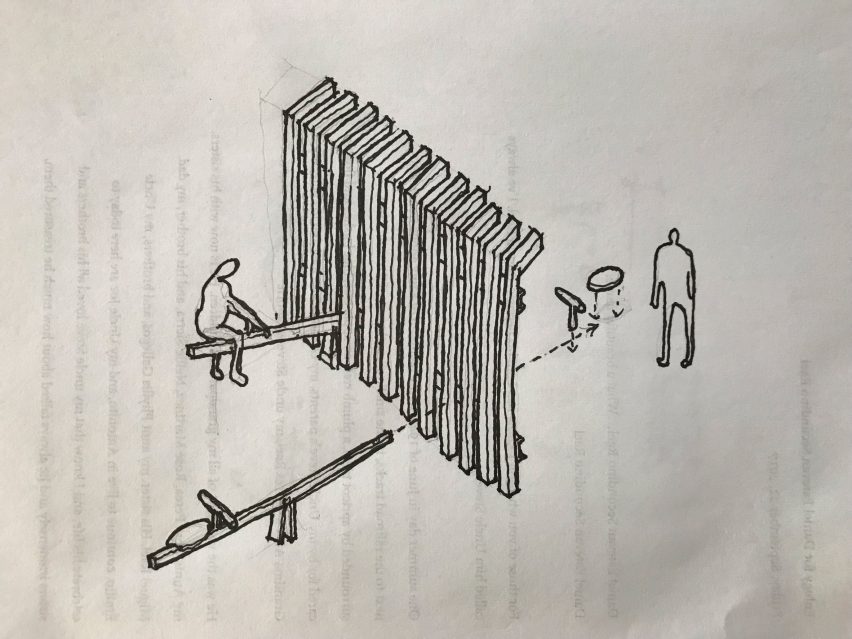
"We designed it so that you could very quickly slide the horizontal parts in between the fence," said San Fratello, who is co-founder of Rael San Fratello and an assistant professor at San José State University.
The devices were fabricated in Ciudad Juárez on the Mexican side of the border in collaboration with local workshop Taller Herrería.
"My partner Ronald went to Juárez, picked up the teeter-totters with some friends and brought them to the border," she explained.
"Then I, with some friends, came from the US side with the seats and the handlebars and we put them on really quickly."
Border patrol stood by and watched
The installation process was watched by US border forces.
"We could see the border patrol up on the mesa," she explained. "So we knew they could see us and we knew they would come quickly and we didn't know what they would do. Our plan was to be able to play for five to seven minutes before the border patrol showed up.”
However, the authorities kept their distance while the equipment was installed.
"They stayed there the whole time and watched," she said. "We were mostly women and children, which I thought was interesting and not something that I necessarily anticipated. I think there was a lot of joy there and I think they recognized that.”
When the agents eventually arrived, they allowed people to continue using the devices. The seesaws were then disassembled and removed.
"We played for about 40 minutes and then, you know, people started getting a little bit tired. And we took them down and took them back to Juárez."
More border interventions to come
The architect also revealed that there are secret plans is in the making for more, similarly provocative projects surrounding the topic.
"We sketch out different ideas for different projects that we could keep pounding on the border, to expose the harsh reality of what is there," she said.
"I think what's important for us is to show the faces of the people who live there. There is this myth that the people crossing the border are 'bad men'. But the reality is that the people who live there are families, just like you and me."
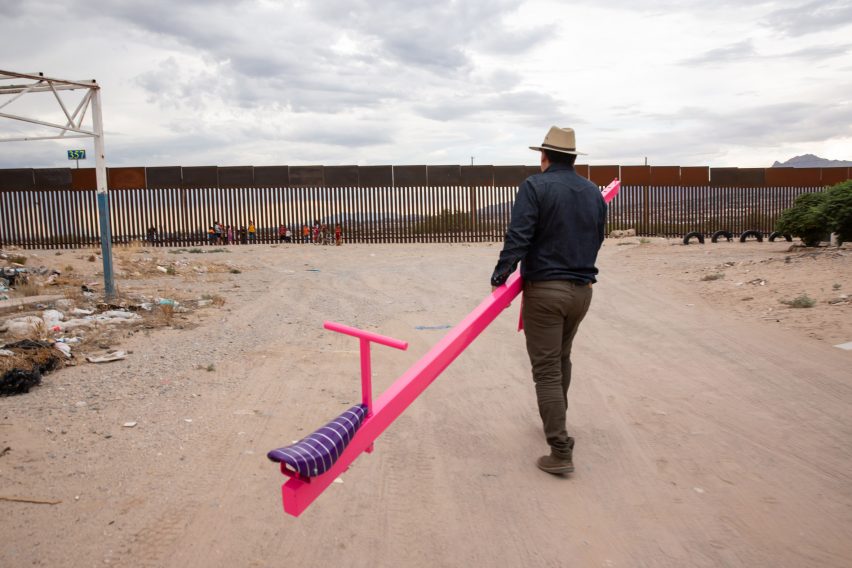
"These are families that have been there for generations and the border crossed them and divided them. [But] they were there first," she continued. "These are people who cross the border to go to work every day or to take their children to school. And I think we want to show the reality of it."
San Fratello revealed that the seesaws will be installed at the National Building Museum in Washington DC "when things open up again".
"We want to give people a chance to play and ride them there as well so they can have a little bit of a continued life," she explained.
Earth as a building material is "better than concrete"
In the live interview, San Fratello showed 3D-printing projects created under the duo's additive manufacturing studio Emerging Objects.
This has involved the hacking of traditional 3D printing machines to create a salt pavilion, tiles inlaid with succulents and a series of structures made from local mud set up along the Rio Grande, which used to form the US-Mexico border until 1846.
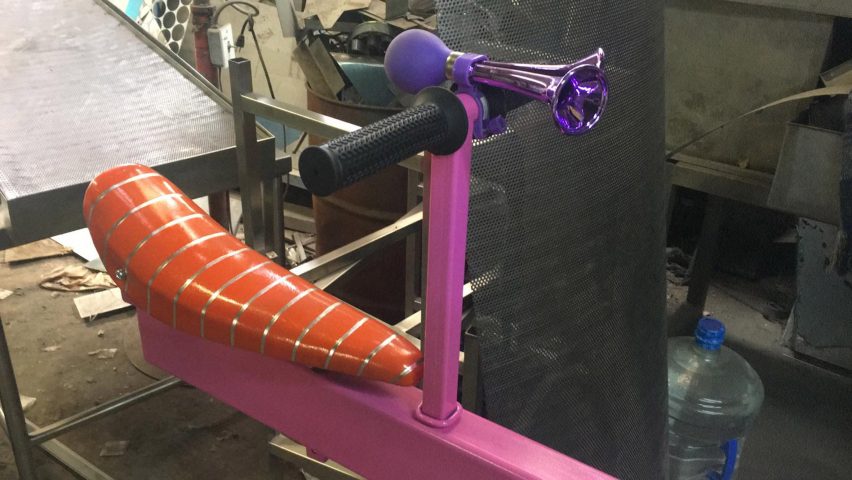
As part of the studio's investigation of earth as a modern building material, the duo has previously built an adobe house in Marfa, Texas, and plans to 3D print a fully inhabitable version this summer.
"Earth as a building material and as a thermal mass is better than concrete in many regions of the world," said San Fratello.
"It would provide cooler interiors in the summer and warmer interiors in the winter. [And] it's free. Why ship cement and concrete around the world when you have a perfectly suitable building material right there?"
San Fratello wants to see border wall removed
The architect also shared that the duo previously proposed a project that would allow the border wall to be used in a productive way, as the home for a solar farm.
"This is one of the sunniest places in the United States and Mexico. And we could use the border wall to literally provide power and electricity to cities on both sides of the border – so that it could be useful if it has to be there," she said.
"But of course, the reality is we don't advocate for the wall at all. We would like to see it gone."
Images courtesy of Virginia San Fratello and Ronald Rael.